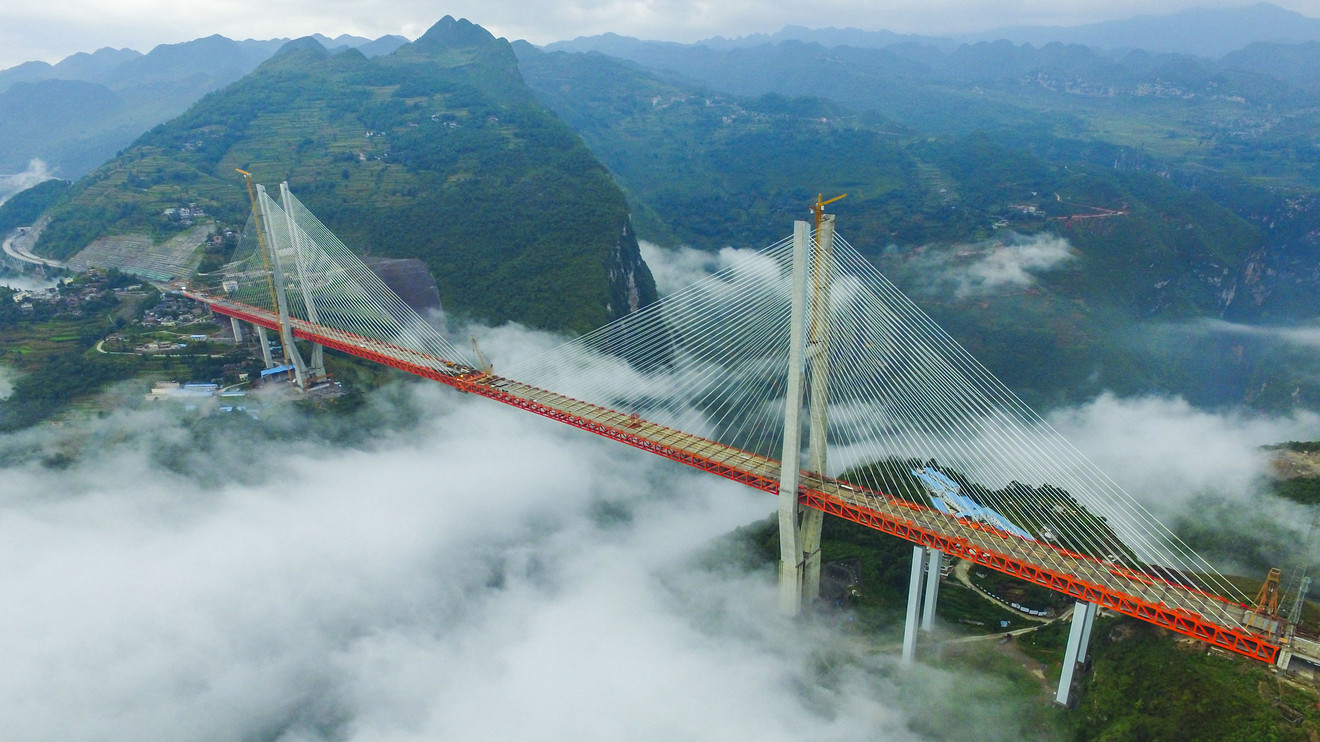China has officially opened what is now the world’s highest bridge, and the statistics are absolutely mind-blowing. The Huajiang Grand Canyon Bridge towers an incredible 625 meters (2,051 feet) above the Beipan River in Guizhou Province – that’s nearly nine times taller than San Francisco’s Golden Gate Bridge.

What makes this engineering feat even more impressive is the practical impact it has on people’s daily lives. What used to be a grueling two-hour journey across the deep canyon now takes just two minutes. Think about that for a moment – residents who might have avoided visiting family or conducting business on the other side due to the time commitment can now make the trip in less time than it takes to brew a cup of coffee.
The bridge spans 2,890 meters in total length, with its main span stretching 1,420 meters. Construction teams worked for three years to complete this massive project, which officially opened to traffic on Sunday, September 28, 2025. The achievement is particularly remarkable given the challenging conditions – the bridge crosses what locals call “the Earth’s crack,” a reference to the dramatic Huajiang Grand Canyon.
This isn’t just about breaking records, though the bridge certainly does that. It surpasses the previous world record holder, the Beipanjiang Bridge, which sits at 565.4 meters high and happens to be located just 100 kilometers away in the same province. Guizhou Province has earned the nickname “the world’s bridge museum” because it’s home to nearly half of the world’s 100 highest bridges.
The engineering challenges were extraordinary. Construction teams had to deal with complex geological conditions, powerful canyon winds, and the precision requirements of working at extreme heights. They used cutting-edge technology including satellite navigation, drones, smart monitoring systems, and ultra-high-strength materials to achieve millimeter-level accuracy in their high-altitude construction work.
Before construction began, engineers conducted extensive testing to ensure safety. In August 2025, they drove 96 trucks onto designated points to test the bridge’s structural integrity. The bridge has earned 21 patents for its innovative construction techniques, with several of these innovations now being incorporated into national bridge construction standards.
The project serves multiple purposes beyond transportation. Local authorities expect it to revitalize what has historically been a very rural and economically depressed region. Plans include developing the bottom of the canyon into a center for extreme sports and adventure tourism, which could bring significant economic benefits to the area.
The broader context makes this achievement even more significant. Guizhou Province has long been isolated from the rest of China due to its incredibly rugged karst topography – it’s the only Chinese province without a single plain. This bridge represents more than just an engineering marvel; it’s a lifeline connecting communities that were previously separated by geography.
The human element of this story really hits home when you consider the project manager, Wu Chaoming, who grew up in a small mountain village in the region. He witnessed firsthand how difficult travel was in the area before modern infrastructure development. Now he’s helped create something that will transform how people in similar villages connect with the outside world.
This achievement showcases China’s continued leadership in bridge engineering, particularly in challenging mountainous terrain. The techniques developed for this project will likely influence bridge construction worldwide, especially in regions where traditional building methods would be impractical or impossible.
The opening of the Huajiang Grand Canyon Bridge represents more than just a new transportation route – it’s a testament to human ingenuity and the power of infrastructure to transform lives. In an age where we often focus on digital connectivity, this physical bridge serves as a powerful reminder that sometimes the most profound changes come from literally bridging the gaps that separate us.



